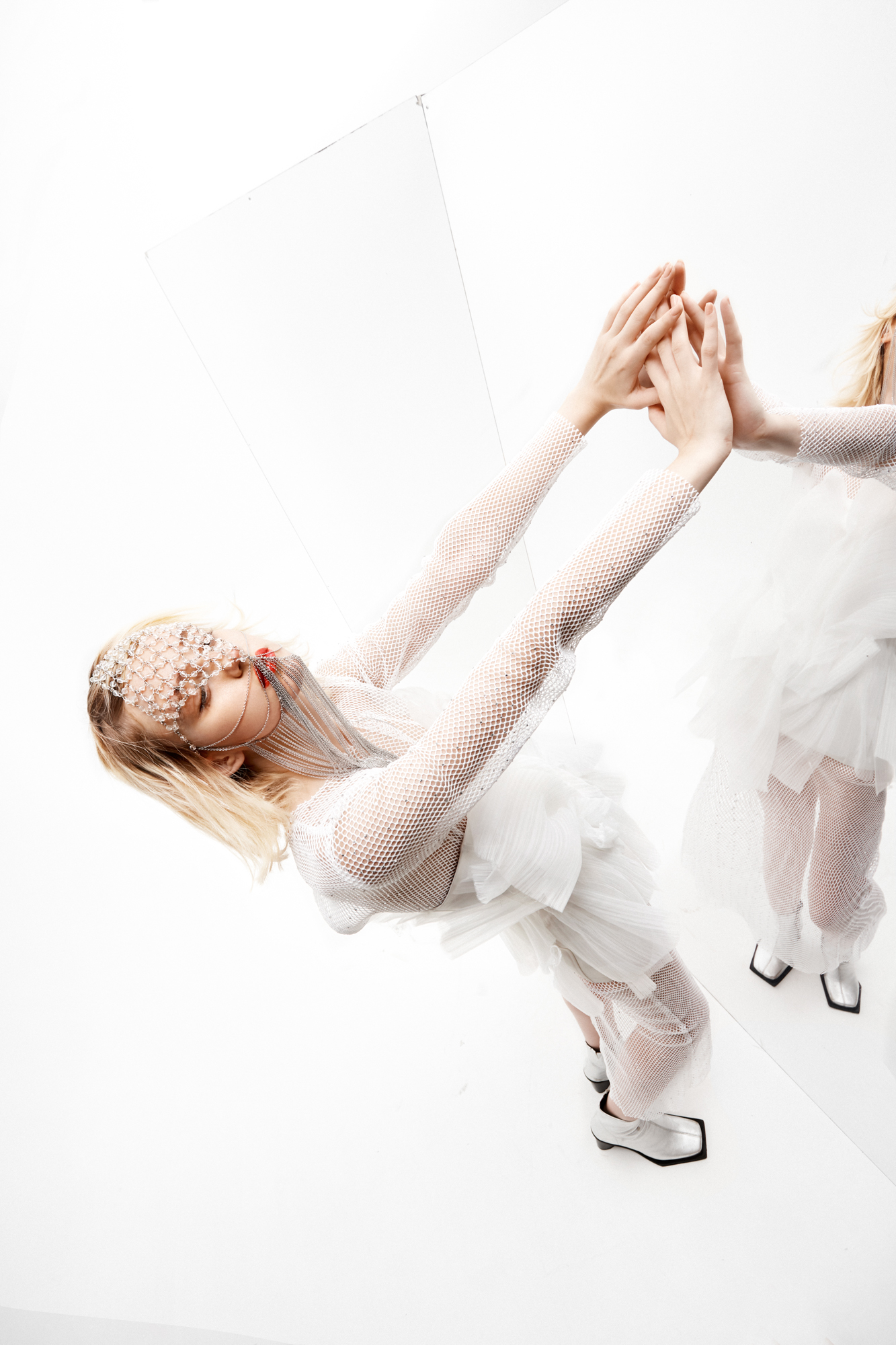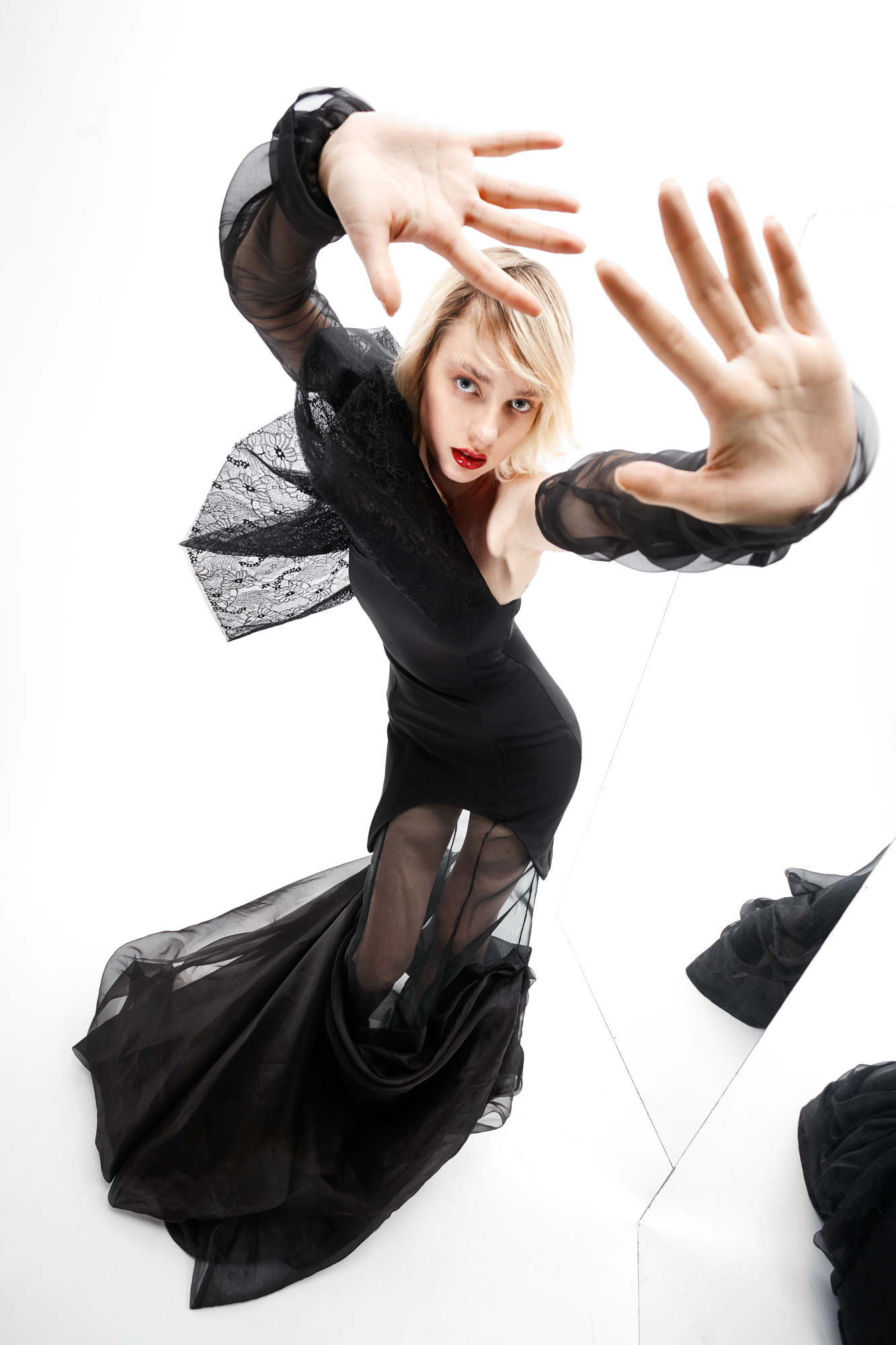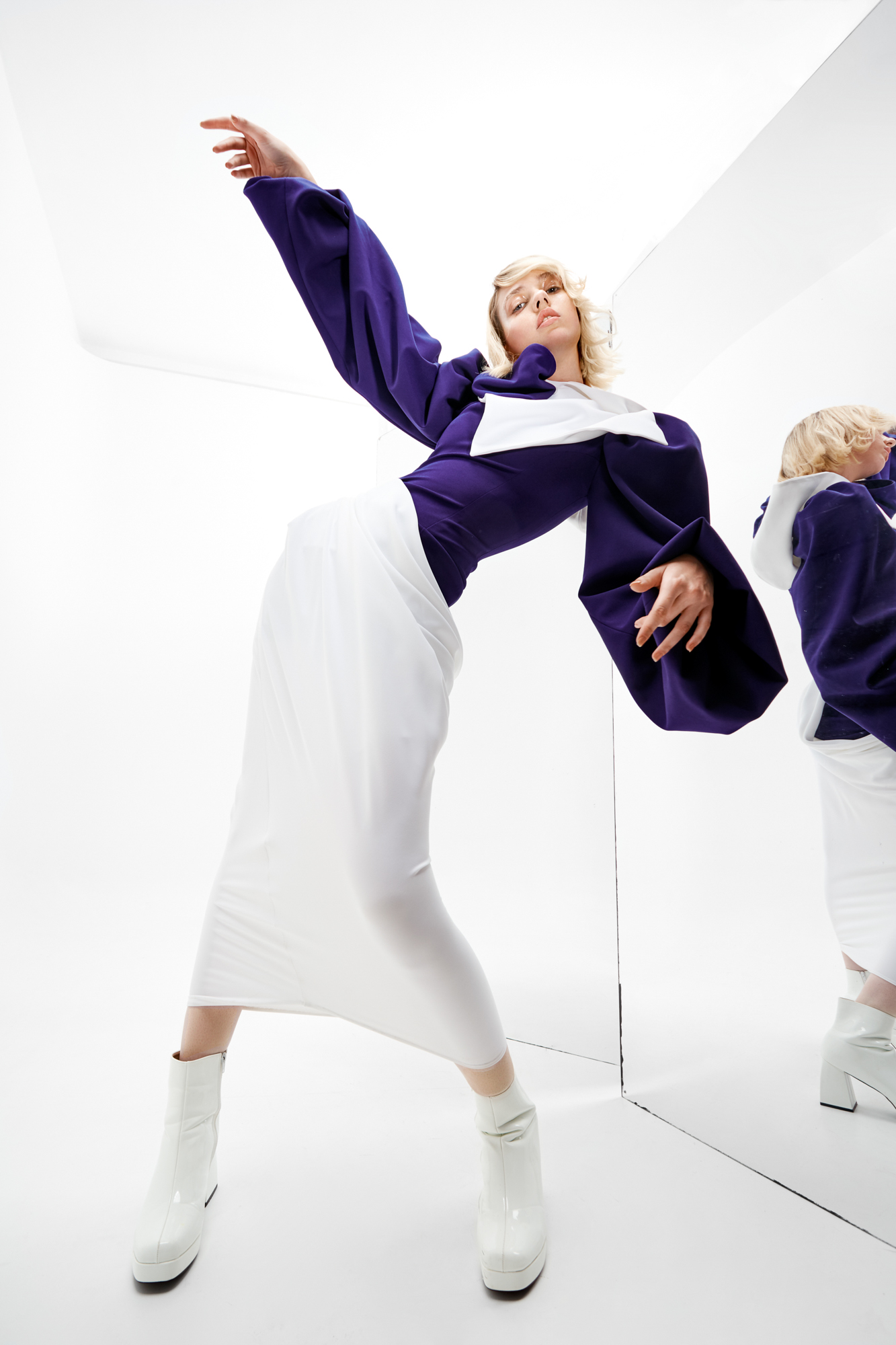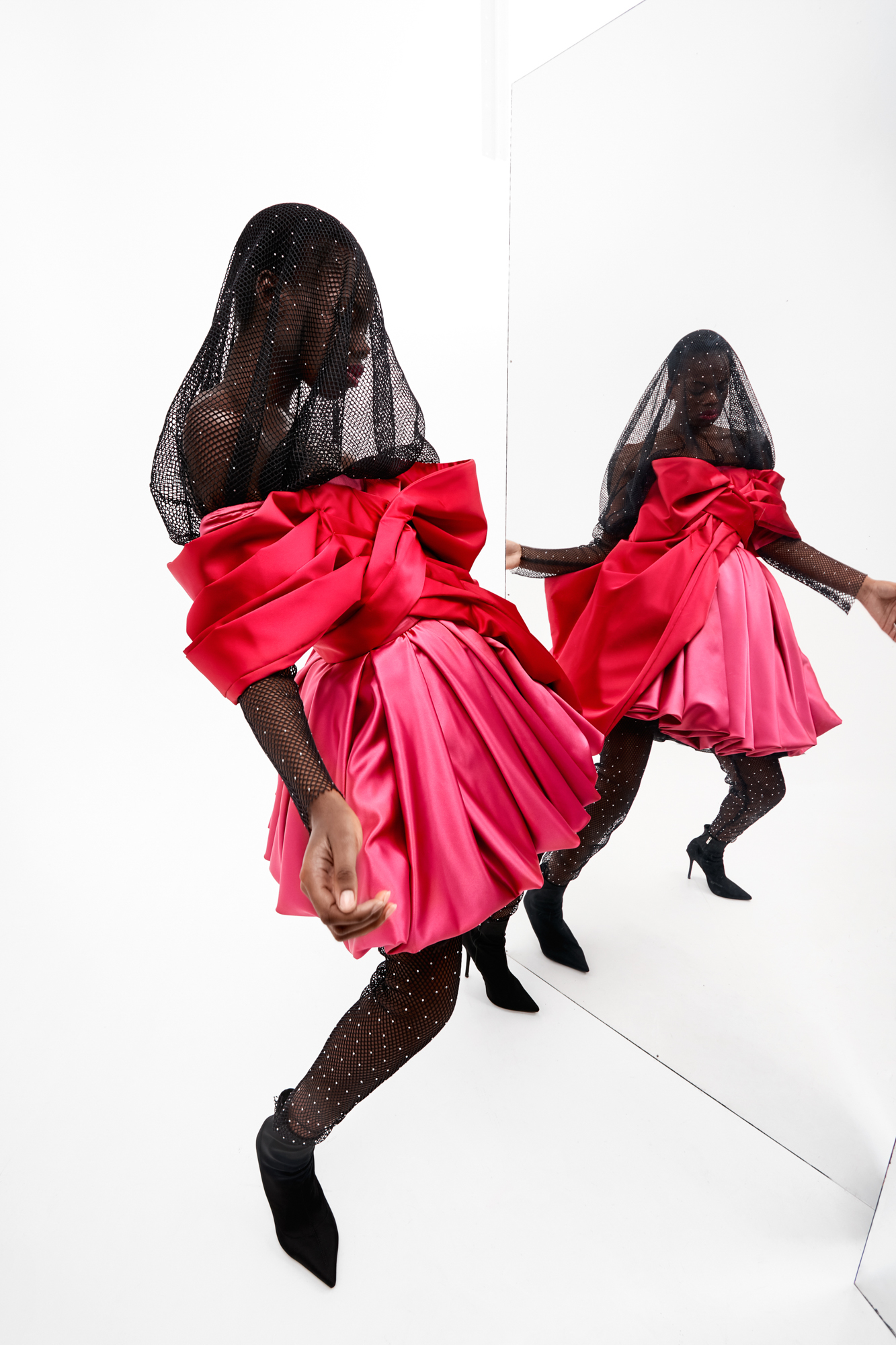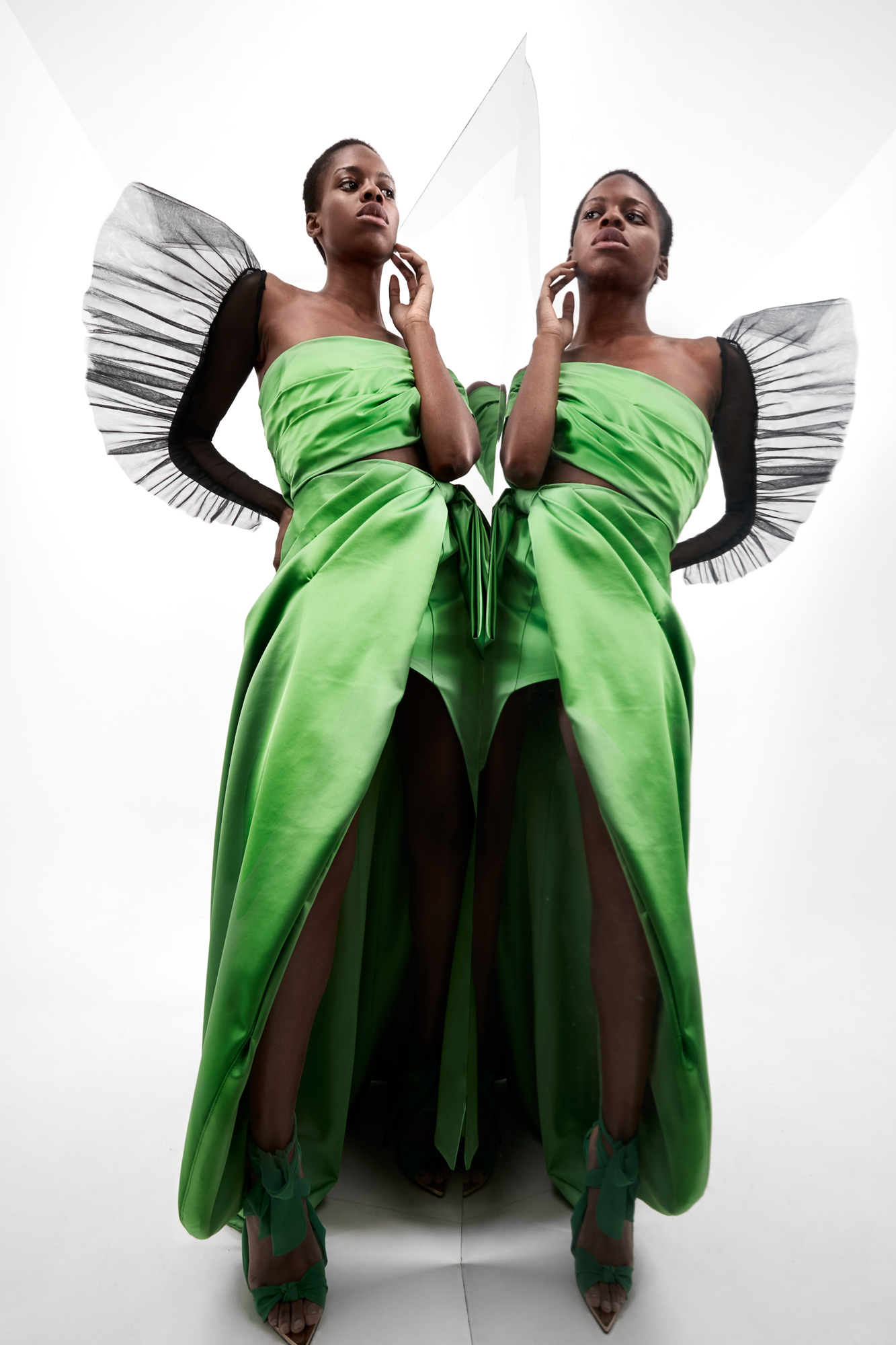By Valentina Alvarado
The collection mixes Borioni’s fascination for fashion history, architecture, art, and cultural research in a convincing and enchanting capsule
As a student of both Accademia di Belle Arti di Macerata and Accademia del Lusso di Roma, the 21-year-old fashion designer Alice Borioni presented her first capsule collection at ALTAROMA, an event set in Rome and aiming to promote emerging fashion talents in the Italian landscape.
The collection has a particular, striking and ever-present iconic element, the veil. Veils have been commonly used for a long time and in different cultures as an element to conceal and hide. However, through veiling with sheer fabrics, the designer intends to enhance beauty, she gives us a sneak peek of a more intimate and precious exquisiteness, inducing a curious feeling in the beholder, augmenting the individuality of the wearer, and adding mystery and drama.
The collection mixes Borioni’s fascination for fashion history, architecture, art, and cultural research as she references her interests in her work. For instance, one of the most stunning pieces of the collection is the headpiece net made with Swarovski and metal chains, featured as a jewellery piece on the all-white outfit. The piece appears as a sort of veil not made from fabric that covers part of the head, the forehead and the face leaving only the eyes uncovered. The accessory was inspired by the sculpture Il Disinganno by Francesco Queirolo in which a fisherman tries to release himself from a fishnet. The original artwork, much like Borioni’s tribute, uses the net element just as an accessory that is meant to enhance what is covered.
The collection also features the use of tulle fabric to replicate, on the body, the effect that arabesques on windows produce when light hits them. Creating shapes and figures that enhance what is seen underneath. For this, Giuseppe Sanmartino’s Veiled Christ was also a key inspiration element as it is a sculpture that features a veil covering the face of Christ, however, just like in Borioni’s work, the sculpture uses the veil as a layer to allow us to appreciate and awe at the beauty of the Christ hidden underneath.
Borioni also looked at Arab women as a source of inspiration as she sees them as women who maintain their own identity even in a globalized world in which western ideas and aesthetics seem to permeate, and sometimes overcome, cultural practices and traditional garments. She was also motivated by her overall experience growing up in which she, like many teenagers, was faced with the decision of following her peers and blending in with the rest or remaining true to herself and risking being seen as some type of outcast.
As a designer, her interest in fashion started at a very young age. During her childhood, she would experience some feelings of not-belonging and she would not feel represented by the clothes offered for girls her age. From a necessity to feel comfortable and enhanced by what she wore and the desire to dream about garments beyond the ones traditionally proposed her, she started to create, draw, and design clothes that would not expose her flaws but elevate her and her personal image she had of herself.
Although she encountered several challenges and obstacles while developing the capsule collection and making it come alive, Borioni never contemplated failure as an outcome, and thanks to the support of her professor, Antonio Martino, and her family she overcame the difficulties that the fashion industry may pose for an up-and-coming independent designer. Borioni hopes to follow a trajectory in fashion in which she can continue to include a vision of poetics, history and culture that will lead her to a path of success for which presenting at ALTAROMA was just the beginning.
